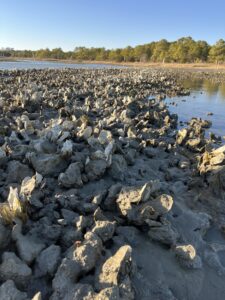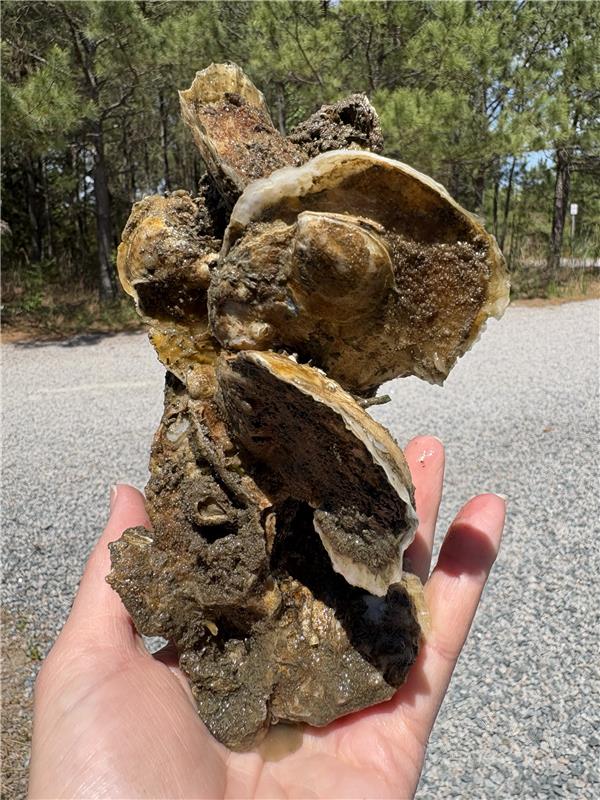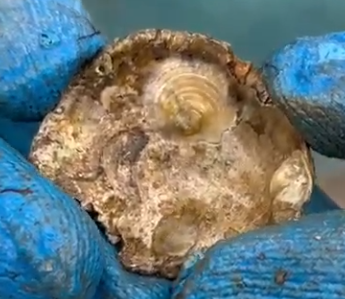
by Mary Reid Barrow
Let me tell you ‘bout the birds and the bees…and the oysters in the seas…!
As with the birds, insects, flowers and more, oyster magic is happening now too.
In spring, as water temperatures rise into the 50s, male and female oysters wake up from their winter sleep.
When water warms to the 60s, long about now, oysters on the Pleasure House Creek Reef, above, and across the Lynnhaven and beyond are stimulated to release their sperm and eggs into the water, said LRNow’s Oyster Restoration Manager, Brent James.
And love is not only in the air but in the water too. Little pockets of oysters on piers and rocks, here and there, along with oysters on great big reef all release clouds of eggs and sperm across the Bay area.
As they drift in the water, eggs and sperm meet up—blind dates so to speak. When they join forces, they become oyster larvae, tiny orphans floating around in the water looking for a home on a hard surface to which they can attach and grow up.

It is thought that larvae are attracted by chemicals released by larger oysters that long ago attached to a hard surface, known as “substrate,” in oyster lingo.
Once they land and attach; oyster larvae are called “spat,” a moniker only a mother could love.
No one is sure why they are called spat but some say little spat resemble spit saliva—small roundish, a little clear, a little cloudy, and a little silvery white.

Fortunately, little spat outgrow their unappetizing name very quickly and within a year they look like and are baby oysters and some, by two, are edible.
Whether spit or spat, saliva or cat fight, these babies are taking hold across the area…It’s that thing called love.